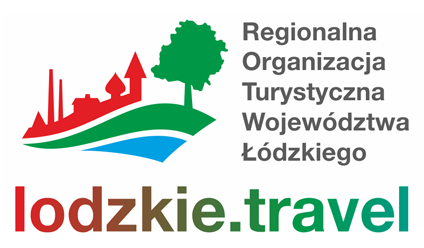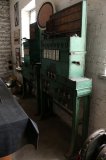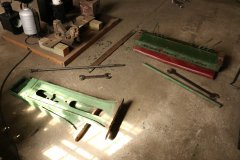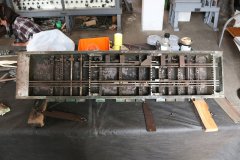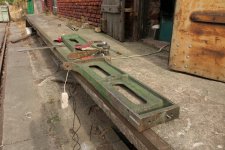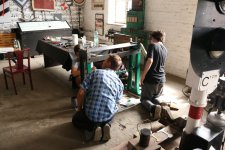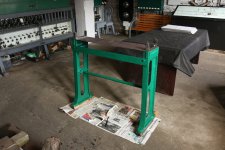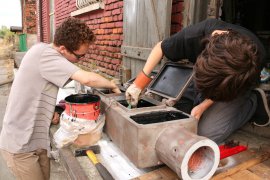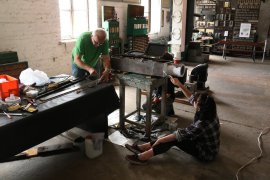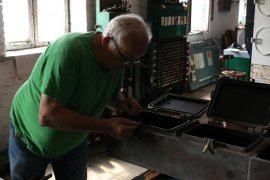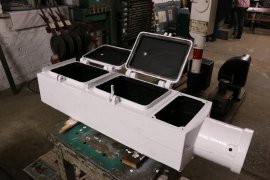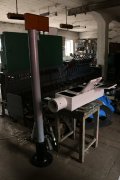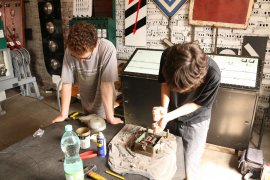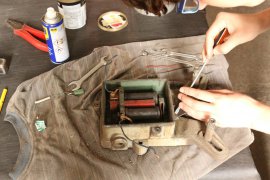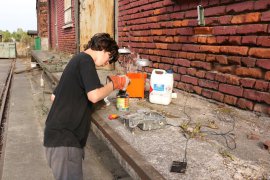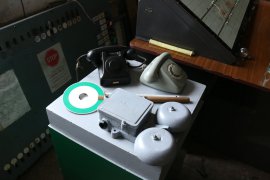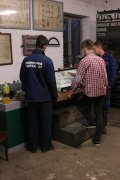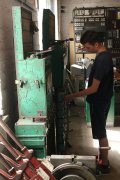Volunteers at the railway signalling exhibition
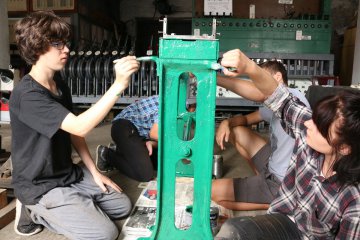
The restoration works at the railway signalling and traffic control exhibition were among the most popular activities during the August volunteers camp. Participants could try out their capabilities in metalworking, mechanics and painting and learn more about inner workings of various interlocking devices during the renovation of three new exhibits.
The largest project which will take us a couple of months to complete is a general overhaul of a key interlocking with block instrument from 1927, originating possibly from the station Łęczyca. This particular specimen was stored outside for some time, before it was finally transported to Skierniewice Shed. This resulted in the poor external condition of the whole device. We started to work on it back in July by thoroughly documenting the electrical connections inside and disassembling the block instrument. In August we focused on the remaining part. First, we disassembled the base and the interlocking box. Next, we proceeded with preparing the base for painting. Due to the complex shape of the cast-iron legs we resorted to a tried-out method of bathing the parts in the solution of caustic soda. Even the thickest or multi layered coat of paint dissolves in the aggressive solution, making the final cleaning with wire brush much easier. After the clean-up, the base was reassembled and painted with a coat of a fresh green paint.
Another exhibit which we hope to bring back to life is a two aspect light signal. This particular specimen is a rare example of early post-war Ericsson-type signal, easily distinguishable by its background plate made form a single piece of sheet metal and a prominent sight for easier regulation of the signal position. Similarly to the key interlocking, some parts have been already taken care of. The main signal chamber has been sanded clean during the previous camp and the post was prepared the previous year. Now we had to paint all the parts and recreate the missing details. The next step will be the assembly and regulation of signal’s optics and recreating the light’s circuits. We hope, that the signal will become a distant signal couple with one of the working light semaphores at the exhibition.
The last project was a matter of chance. While looking for the missing parts in our storage we came across external signalling bells which are commonly used at signal boxes and other posts along the railway as an auditory cue for the phone signals. We think it may become a now exhibit combined with the signal box phones already present at the exhibition. The chosen signalling bears appeared to be fully functional but required a thorough clean-up and repainting.
During the breaks in work, the participants of the camp could learn more about the various traffic control devices and discuss the future improvements to the exhibition.






